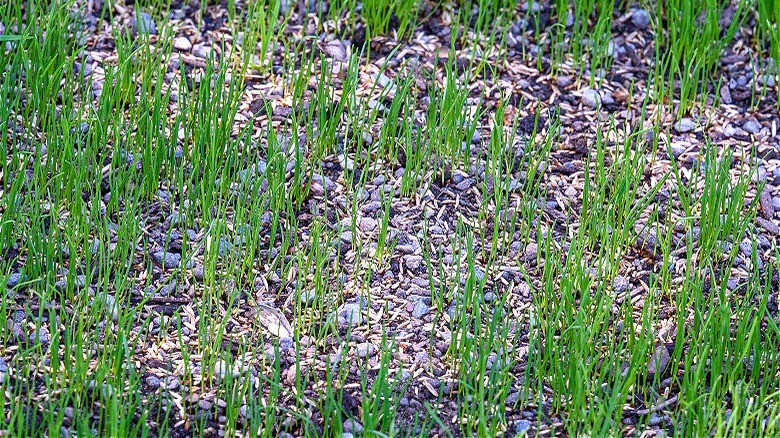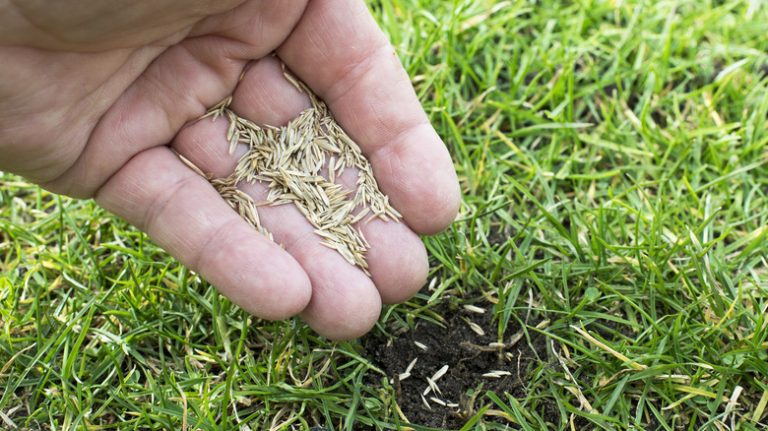We may receive a commission on purchases made from links.
Picture the heartbreak when eagerly awaited grass sprouts turn out as to be mismatched as your attempt at a self-haircut during lockdown — nothing short of a morale crusher. Recognizing the wrong type of grass may not be as straightforward as waking up to a regrettable fringe; however, subtle signs like poor germination or unexpected leaf structure on the sprouts can be an early hint. Sure, you didn’t sign up for a crash course in grass identification, but a related pointer or two might help. Each grass variety has significant differences that range from leaf structure, growth rate, and even size, which can be as telling as a neon sign in the darkness.
You might have envisioned mowing stripes in a lush Kentucky bluegrass, only to deal with a dramatic zoysia grass throwing a fit because the soil pH didn’t match its exacting standards. Fortunately, at your disposal are DIY strategies that can turn your backyard battleground into the emerald oasis you’ve always dreamt of — somehow like a reality home makeover but with more dirt. A slight grass mismatch might benefit from overseeding with the correct grass variety or suppressing the growth of the incorrect type. If your lawn’s pH suffers from a split personality disorder, soil amendment could bring it back to balance. But in dire straits, an all-out lawn renovation will suffice.
Deciphering signs you planted the wrong type of grass

Just like humans, plants exhibit varying energy levels and growth rates. If your patch of green grass has veered off from the prescribed grass germination timeline, it may be living its best “wrong” life. Of course, there’s the matter of climate compatibility. Fancying cooler temperatures, cool-season species such as fescue, ryegrass, and bluegrass relish temperatures between 60 to 70 degrees Fahrenheit. Meanwhile, warm-season types like St. Augustine, Bahia, zoysia, Bermuda, and centipede grass revel in the balmy 80 and 95 range. So, if you expected the warm-season, low-growing buffalo grass only for cold-season Kentucky bluegrass to show up with its dark-green blades and pyramid-shaped seed heads, you’ve got a party pooper. But don’t rush to conclusions, though. Lagging or non-existent growth could also result from other factors like harsh soil.
Different grass varieties have distinctive leaf structures. So, if your sproutings show up to the party wearing another attire than expected, you might have held a soiree for the wrong attendees. The next indication that you cultivated the wrong grass is a size mismatch. Picture your lawn as a beautiful symphony where all the blades of grass dance in harmony at the same height, then a misplaced variety emerges, shooting taller than the rest and disturbing the rhythm. Lastly, if, despite spa-like care, your grass continues to wither faster than your weekend vibes on a Monday morning, that might signal a soil pH incompatibility.
Your options for unwanted grass in your lawn
One of the weapons you could unleash against unwelcome grass species is overseeding. But it is not just tossing your favored grass seeds haphazardly. Ensure your chosen breed meshes well with the prevalent climatic conditions. The cost here includes the price of the correct grass seed and the possible rental or purchase of an aerator or spreader. Suppression could be your hero, too, but in not-so-gleaming armor. The procedure involves applying non-selective herbicides to evict the offending grass party. Afterward, you have a two- to four-week cooling-off window before reseeding the desired grass. This might demand a heftier input of money, time, and elbow grease, but the gratification from reclaiming your lawn is invaluable. A pre-emergent herbicide is a great option for non-sprouted grass seeds.
Like how your skin relies on a balanced acid mantle to combat elements, soil pH is critical to your lawn’s health. This spotlights pH testing as one of the plots in your lawn restoration saga. Terms like “acidity” and “alkalinity” might strike a technical note, but easy-to-use DIY kits like the SONKIR Soil pH Meter on Amazon are on standby for this adventure. Respective treatments for acidic and alkaline soils are lime and elemental sulfur. Finally, if all else fails, likened to sticking a Band-Aid on a gaping wound, consider a total lawn makeover. This last resort, while pricier, labor-intensive, and time-consuming, demands a fresh slate — stripping your lawn bare and starting completely anew with a better-suited grass variety.
